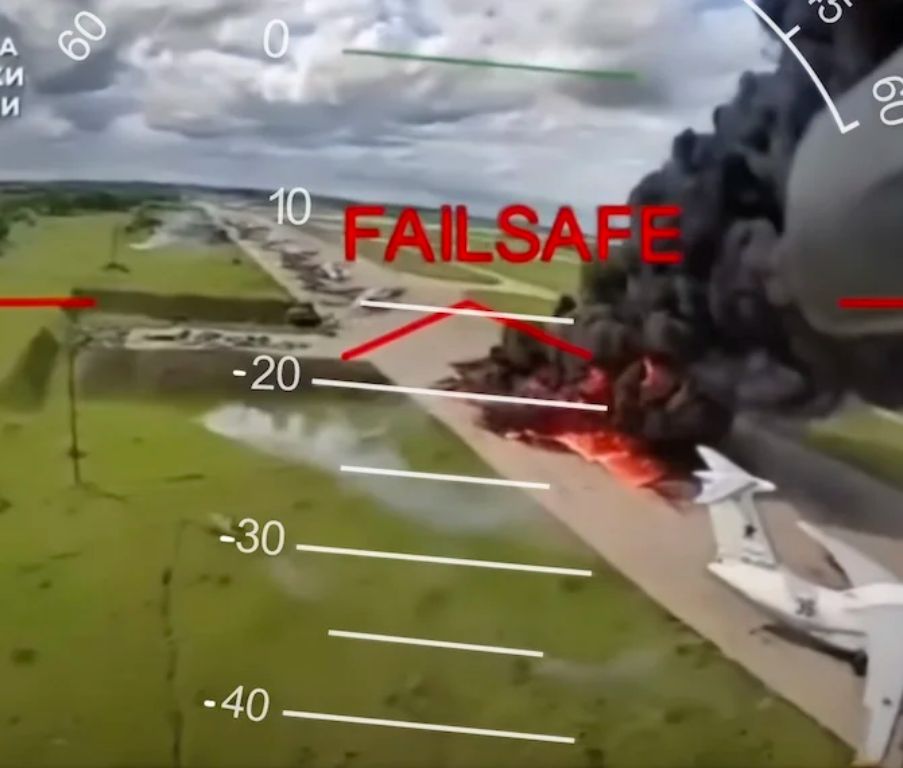Ukrainian drone strikes on Russian airbases highlight the urgent need for Indonesia to strengthen its airbase defenses against modern aerial threats.

(Photo: International Policy Digest)
On June 1st, Ukraine launched a stunning wave of drone attacks on Russian airbases. Dubbed Operation Spider’s Web, the operation deployed hundreds of low-cost drones, exposing the fragility of Russia’s airbase defenses. The estimated $7 billion in damages served as more than a tactical win—it was a wake-up call. For countries like Indonesia, it offers an urgent lesson: air power is only as strong as the ground infrastructure that protects it.
Indonesia isn’t in an active war, but that’s no excuse for complacency. The Indonesian Air Force (TNI AU) is growing its fleet of advanced aircraft, yet the facilities meant to house and defend them remain worryingly vulnerable. Weak hangars, outdated protection measures, and insufficient drone defenses risk turning cutting-edge jets into sitting ducks. Russia’s oversight offers a clear warning—Indonesia must act before it’s too late.
Ukraine’s strategy was as ingenious as it was unsettling. Using drones launched from containers mounted on trucks, many stationed just kilometers from Russian targets, Ukraine struck key airbases with precision. The damage was devastating. Strategic bombers, many left exposed in open fields or makeshift shelters—some laughably shielded with old tires—were wrecked. The message was clear: even the most technologically advanced air forces are deeply exposed without resilient ground infrastructure.
Indonesia fields over 100 combat aircraft, including F-16s, Su-27s, and Su-30s, and is preparing to induct Rafales, F-15EXs, and Chinese J-10s. These aircraft are deployed across 41 airbases overseen by three Air Operations Commands, categorized as type A (major), B (intermediate), and C (remote). Yet across the board, inadequate protection remains a pressing problem. The TNI AU’s facilities simply aren’t built to handle modern threats, especially drones.
This vulnerability is especially stark at key bases like Roesmin Nurjadin in Riau and Halim Perdanakusuma in Jakarta. These sites have some hardened shelters, but most are relics of an earlier era, not designed for the age of drone swarms and precision-guided munitions. At Indonesia’s more remote airbases—many of which play vital roles in maritime and border security—the situation is worse. Aircraft are often housed in inflatable mobile hangars, structures better suited to peacetime maintenance than warfighting. They offer minimal, if any, real protection.
Indonesia’s geography and limited defense budget have long hindered robust airbase development. The result? A patchwork of sunshade shelters that amount to little more than glorified carports. They’re inexpensive and easy to construct, but they leave millions of dollars’ worth of aircraft dangerously exposed. It’s a strategy built for peacetime optics, not wartime resilience.
To Jakarta’s credit, the country has started bolstering its drone defenses. PT Pindad has developed the SPS 1 anti-drone weapon and the MV3 Mobile Jammer, marking important steps forward. But whether these tools are uniformly deployed across the TNI AU’s operational airbases remains unclear. Inconsistency breeds vulnerability. Without comprehensive coverage, these technologies are more showpiece than shield.
So what should Indonesia do? A three-tiered strategy offers a practical roadmap.
First, Jakarta must make anti-drone systems a baseline requirement, not a bonus feature. Prioritizing the mass deployment of locally produced jammers and counter-drone systems can quickly raise the protective baseline. Every operational airbase should be equipped with detection networks and jamming capabilities—cheap compared to the cost of replacing a fighter jet.
Second, Indonesia must invest in hardened aircraft shelters. These reinforced hangars cost around $6–7 million each, depending on materials and design, but they offer vastly superior protection compared to sunshades. Priority should be given to type A airbases, where the stakes are highest. Even a small number of hardened shelters could make the difference between airpower surviving an attack or being obliterated on the ground.
Third, and most ambitiously, Jakarta should explore the development of underground airbases. This is no longer the realm of military fantasy. Iran’s Eagle 44 and Taiwan’s Chiashan Air Force Base have shown how mountain-based facilities can house jets, drones, and support assets, shielded from aerial attack. These subterranean complexes include everything from fuel depots to command posts to full maintenance facilities—self-contained strongholds for modern air forces. Indonesia’s mountainous regions in Java, Sulawesi, and Sumatra offer similar potential. Of course, these projects aren’t cheap. Taiwan’s Chiashan base alone reportedly costs over $1 billion. But the strategic payoff—long-term survivability in an age of asymmetrical warfare—could be priceless.
Ultimately, Ukraine’s drone campaign laid bare a painful truth: conventional military infrastructure is ill-suited to the unconventional threats of today. For Indonesia, this isn’t a matter of if but when. A modern air force is only as credible as the protection that surrounds it.
Jakarta must resist the temptation to treat anti-drone systems and fortified hangars as optional luxuries. They are necessities. Without them, its growing arsenal of jets may prove more ornamental than operational. If Indonesia is serious about projecting power and defending its skies, then fortifying its airbases isn’t a long-term ambition—it’s an immediate imperative.*
Karl Gading Sayudha is an analyst at the public affairs and strategic communication firm, Kiroyan Partners. The views expressed are personal.
Source: International Policy Digest, July 17, 2025.
Download the clipping here.



